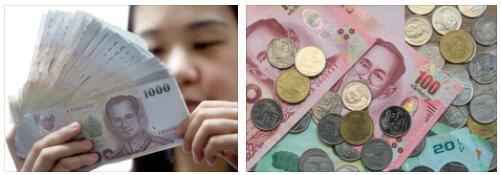Thailand Economic Overview
Belt and Road Initiative in Thailand
Thailand is experiencing a development boost from the Chinese government’s Belt and Road Initiative (BRI). The BRI can primarily be described as an infrastructure project. New roads and train connections are combined into “corridors” in which they are combined with investments in ports, industrial parks or technology hubs. For Thailand, the north-south connections via Laos to Kunming in China and west-east connections to Vietnam are decisive. There are also plans to build a canal through the Kra Isthmus, which could significantly shorten the trade route to China. A consortium of ex-generals and politicians in the Thai Canal Associationst and up for the project, even if concrete plans are a long time coming. Some authors see the conflict over access to investments and projects as the actual background for the political polarization in Thailand.
How high can the minimum wage be?
Despite successful economic development, wages in Thailand are very low. An average of around 12,000 baht (360 euros) per month hides a wide range. While workers in agriculture or construction earn only 5-6,000 baht, employees in middle management or engineers can earn ten times as much. The cost of living is estimated at 6-18,000 baht per month, depending on the province. A reasonable minimum wage is therefore one of the most important development issues in Thailand. In 2013, the Yingluck government almost doubled the minimum wage to 300 baht a day – a very popular measure. Almost promised in the 2019 election campaign all parties, another significant increase. Plans by the Prayuth government to increase it to 400 baht are now being opposed by the Association of Thai Entrepreneurs. They warn of an outflow of capital and difficulties for smaller companies. On the other hand, it is found that the 2013 increase did not have any negative effects on the economy. A minimum wage of 400 baht per day would still be less than a living wage – and at 12 euros only slightly higher than the minimum wage in Germany – per hour.
Economic system & its sectors
The World Bank officially declared Thailand an ” upper middle income” country in 2011. With double-digit growth rates in the boom years of the 1990’s, the country is considered “ a success story of development”. Successful, export-oriented industrialization has fundamentally changed the economic and social structure of the country. A market-oriented development has established itself in the countryside. Agriculture now only contributes just under 10% of GDP, while industry (approx. 40%) and services (almost 50%) dominate. Important industrial sectors are the automotive industry, the electronics industry, the textile industry and the construction industry. In terms of services, tourism, telecommunications and finance dominate. The agriculture (rice, rubber, fish and poultry) is now in global value chains embedded. Thailand has long since assumed the role of the gateway to the Mekong region and Asia.
Economic indicators, analysis, statistics
Thai sources for economic analysis and statistics are the Board of Investment, the Bank of Thailand, the Ministry of Finance and the Bureau of Statistics. Both the World Bank and the Asian Development Bank offer overview pages. CEIC Data is a real treasure trove for economically relevant statistics and graphics, which often represent longer time sequences. Even UN sites offer extensive analyzes. The trading economics page has extensive economic indicators. The Economist’s Thailand page is also helpful. GTAI delivers in Germanan initial overview as well as further market analyzes. The German -Thai Chamber of Commerce is a useful gateway for German companies. From the employee’s point of view, the ILO site is more helpful.
Trade: domestic and foreign trade, trade balance
After China and Japan, Thailand’s most important trading partners are the USA, Hong Kong and Malaysia. In 2015 total exports were $ 214 billion and total imports were $ 202 billion, with a positive trade balance. The volume of trade with Germany in 2016 was just under 10 billion euros. The most important German exports to Thailand were chemical products, machines, electronics and cars. Thai exports to Germany with electronics, data processing, rubber products, food and jewelry generated a significant trade deficit (tourism not included).
The negotiations for a free trade agreement between Europe and Thailand, the Thai-EU-FTA, which began in 2013, are currently explosive. Thailand is under pressure because the Generalized Scheme of Preferences, which provides for lower tariffs for developing countries, expired in 2015. Tariffs on important export products such as processed shrimp have skyrocketed from 7% to 20% since then. This is a big problem for Thailand’s export strategy. But the civil society of Thailand fears that the EU wants to enforce stricter intellectual property rights, which would make it more difficult for the many HIV-positive people to have access to drugs. In a draft leaked to the press, the EU is calling for stricter patent rules, such as the renewal of patents, data exclusivity, but also investment protection clauses that could be used against health policies such as compulsory licenses. Since the military coup in 2014, however, negotiations for a free trade agreement have been suspended.



